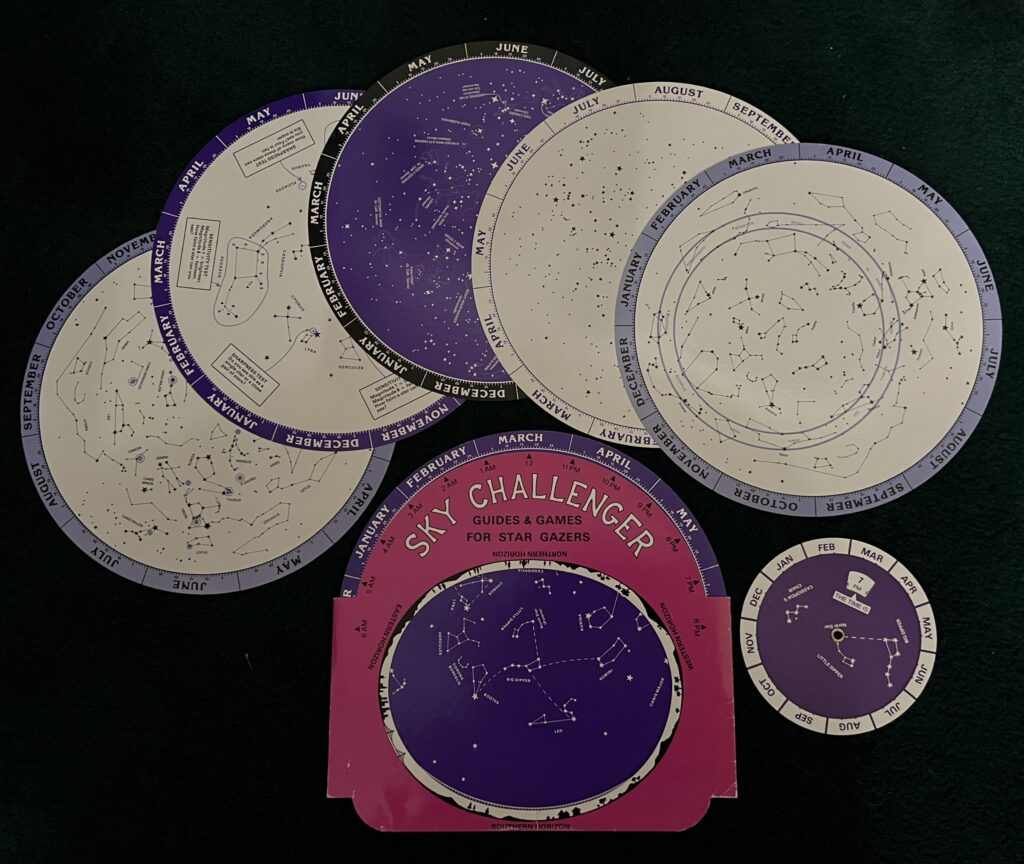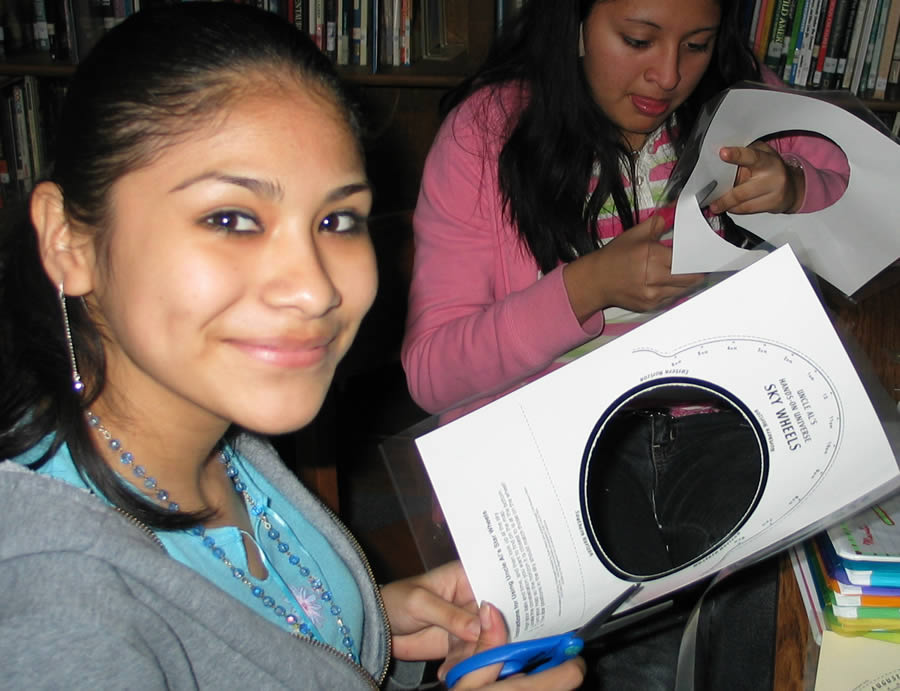Sky Challengers and Star Wheels
Planispheres are star maps adjustable for any time of night in any month of the year.
The latest Starwheel (Nov 2024) is the Messier Starwheel. If you do telescope star parties and have ever wanted to quickly know which Messier objects are well positioned on a given night, the Messier Starwheel is especially for you! See “Download Starwheels”, “Northern Hemisphere” on this page. It is sized to fit on 8½”x11″ paper by default, good for students with decent eyesight for reading small print. It’s easiest if printed or copied on to the heaviest cardstock available, e.g. 110 lb. A good way to make a larger version for teachers (or senior stargazers) is to print or copy the master 130% to fit on 11″x17″ cardstock. Of course the usual custom applies: use a red light to illuminate the starwheel when reading at a star party.
Sky Challengers

In the 1970s, Budd Wentz at the Lawrence Hall of Science with NSF funding developed Sky Challengers, a unique planisphere (adjustable star map) with 6 interchangeable disks:
- Introductory Wheel (basic constellation finder)
- Native American Constellations
- Binocular Sky Treasure Hunt (favorite deep sky objects)
- Test Your Eyes-Test the Skies (a few star magnitudes marked)
- Where Are the Planets? (ecliptic zone marked)
- Invent Your Own Constellations (stars, no constellations)

The original Sky Challenger is no longer in print, but the 6 disks plus holder are now available as a Do-It-Yourself product reduced to allow print on 8.5″x11″ cardstock or paper.
See DIY Sky Challengers.
Star Wheels
Derived from the original Sky Challenger design, there are now many interchangeable disks (wheels), available for free that can supplement the original 6 disks of Sky Challengers. These supplementary wheels are sometimes referred to as Uncle Al’s Starwheels or Sky Wheels, created for the Hands-On Universe project and the NASA Kepler Mission.

Download Starwheels
instructions for making them are included on the PDFs.
Northern Hemisphere
- English – Northern Hemisphere Starwheel (1.7 Mb, PDF; Apr 2011) includes holder and 2 wheels (basic constellations and coordinates wheels)
- Blank Star Wheel (no lines or labels)
- Higher Latitude Starwheel (60°+; Alaska; 1.7 Mb, Nov 2014)
- Icelandic Star Wheel (64°N; 1.4 Mb, PDF; courtesy Sverrir Gudmundsson)
- Japanese Star Wheel (1.6 Mb, PDF; prepared by Kaoru Kimura, updated September 2015)
- Kepler Star Wheel (has Kepler target field marked and naked eye stars known to have exoplanets)
- Messier Star Wheel (has mid- & high-latitude holders; ideally enlarge 130% to 11″x17″ heavy cardstock.
Southern Hemisphere
- English – Uncle Al’s Starwheel – Southern Hemisphere (1.2 Mb PDF; Nov 2014)
- Español – Planisferio del Tío Al – Hemisferio Sur (1.2 Mb PDF; Nov 2014)
- Português – Planisfério Celeste do Tio Al (1.2 Mb PDF; Nov 2014)
- Pulsar Starwheels (1.2 Mb PDF; Aug 2011; in English) – pulsar target objects from Parkes Radio Telescope
Download Messier Catalog Excel File.
To Use the Star Wheels
- Set date and time
- Note which horizon the constellation is closest to and put that horizon near the bottom.
- Constellations higher in the sky are closer to the center of the map.
You may find more details and ways to use Star Wheels in the “Making and Using Star Wheels” section of Investigation 2.1 Using Star Maps from the Global Systems Science book A Changing Cosmos.
See also the Lawrence Hall of Science Star Wheels page.
[Historical note: Along with Sky Challengers, Lawrence Hall of Science once sold the Star Maker Planetarium Kit, a build-it-yourself mini-planetarium. It included a geodesic pinhole projector and a 6-foot-diameter dome that suspended from a ceiling. The revolving geodesic globe projected stars onto the dome and re-created the heavens as seen from anywhere in the Northern Hemisphere. Assembly, which included punching holes in the globe for the stars, took four to eight hours. Star Maker is no longer available.]

